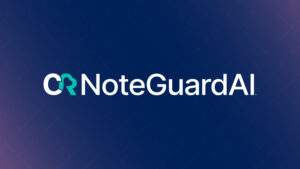ABA billing can be complex. Billers juggle a delicate balance of data transfer, audits, claims submission, triage, and collections. Using the right tools and workflow can improve efficiency for your organization. The Revenue Cycle Management (RCM) process can be simplified using a single software system to house all data. Further, this can help streamline the day-to-day tasks and maximize your collections.
Simplifying Workflows Within a Single Software System
There are many benefits to billing from a single software system. All client and employee information is housed in one place. This allows the onboarding, scheduling, and billing teams to work in unison to ensure the data is correct. This helps your teams manage credentials for all staff, to ensure they are up to date, increasing visibility across the organization. Eligibility checks are better tracked using a single source of truth, to give all teams insights into clients' coverage.
Authorization management is crucial to ensure the correct number of hours are scheduled in line with the client's authorized hours. All data in one location allows for total insight into authorization reports to track utilization.
Ensure Accuracy with Pre-Billing Audits and Real-Time Access
As a biller, your pre-billing audits are the most critical step in the RCM process. If you're not auditing to ensure your data is correct on the front end, it will cause a host of issues downstream. Scenarios such as provider and client overlap, incorrect service codes, and session note audits can be challenging for the most seasoned billers. Ensuring your software has a mechanism to mitigate these issues is important to maximize your clean claim rate.
Real-time access to billing entries and session notes for auditing ensures you comply with payor standards for documentation. The most effective way to stay organized is to work within one software system. Further, ensure that the system has filters for mismatch time on billing entries, filters for provider overlap, and tools to catch missing data such as service codes, modifiers, and more. Real-time access to billing entries and timesheets helps your billing team quickly access and resolve mistakes before they impact cash flow.

Achieve Seamless Claims Generation
During the claims generation process, billers refine the billing data into the format the payor expects, which ensures timely filing and clean claims. Using a single source of truth to schedule and create timesheets empowers billers to optimize workflows and increases clean claims rates. Subsequently, less time is wasted on corrected claims, triage, and appeals. Housing all data within a single system preserves the data's integrity and improves the efficiency of your operation.
Increase Collections and Reduce Payor Audits
Gross Collection Rate is measured as a percentage of your total billed charges that are successfully collected within a specific date range. This payment data comes from the payor by way of the clearinghouse. It's important to ensure nothing gets lost in translation. AR reports such as a Receivables [Link to receivables report] report will show outstanding money that has yet to be collected. This is a useful tool to track down unpaid claims.
An RCM report will show your Gross Collection Rate, allowing you to track monthly collections rates and isolate problematic payors that require timely follow-up. Funding sources have been known to make mistakes, recoup payments, misrepresent dollar amounts, etc. This is where your financial reporting can help monitor potential payor mistakes and hold the payors accountable.
Finally, payor audits are a concern for many organizations. However, they are less daunting when all your data is organized in a single location. The ability to pull notes and forms associated with billing data, all from a single source of truth, prepares you to provide any documentation the payor requests. Leveraging a single source can enhance the overall effectiveness of your organization. This will help to maximize revenue and give you the resources needed to improve outcomes for your clients.
From Simplifying Billing Workflows to Offering Real-Time Insights and Analytics
CentralReach empowers billers to do more with less effort, ultimately driving improved financial outcomes for healthcare organizations. If you’re ready to learn more, check out Unleashing the Power of CentralReach Practice Management Software: Empowering Billers to Excel.

Bret Sullivan
Enterprise Customer Success Lead
Bret Sullivan is an Enterprise Customer Success Lead for CentralReach with a demonstrated background in the Behavioral Health Field. Bret specializes in Practice Management solutions and is a Subject Matter Expert in Practice Management, Advanced Business Intelligence, and the Data Warehouse. Bret has participated on several Product focus teams to help shape the CR platform and is an advocate for his customers in the ABA and IDD space.





